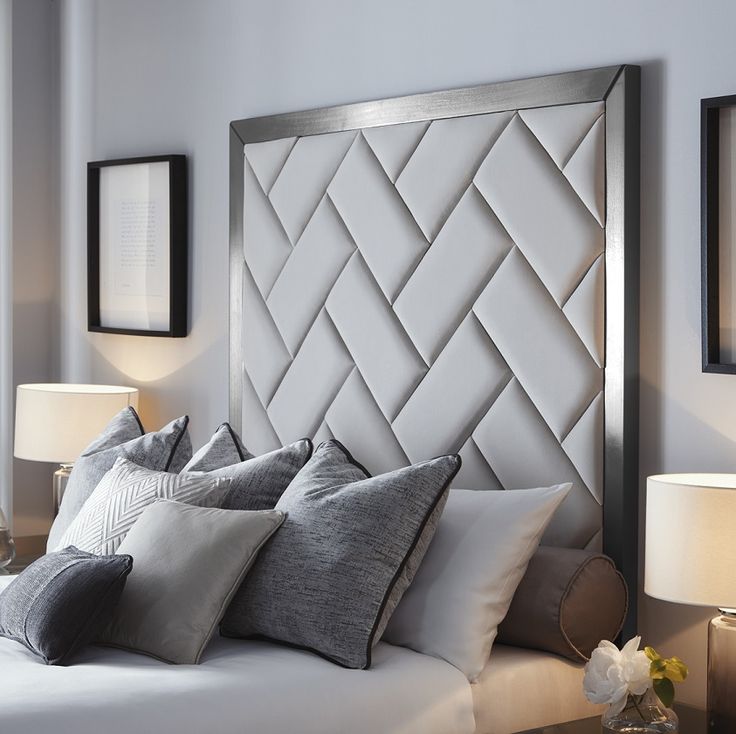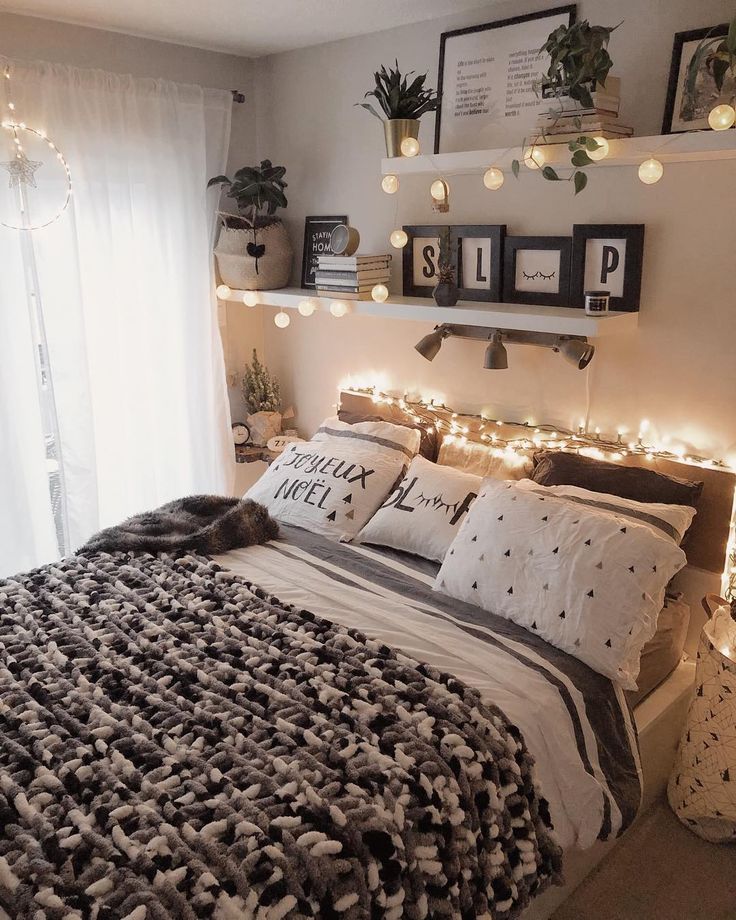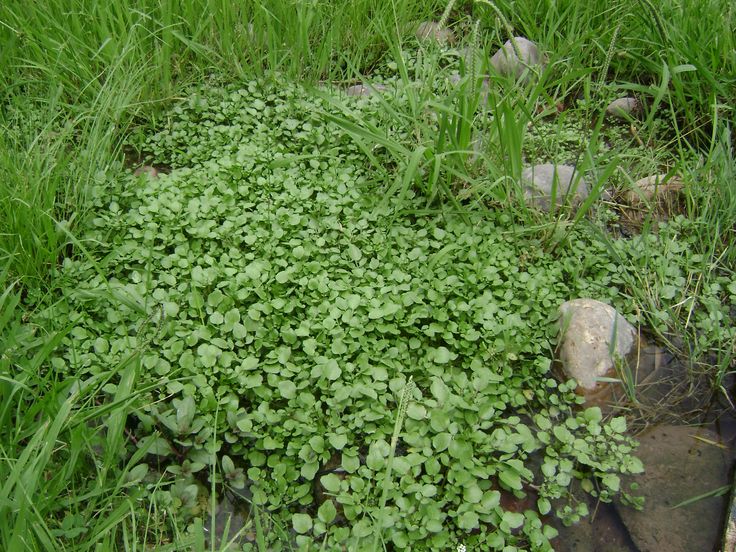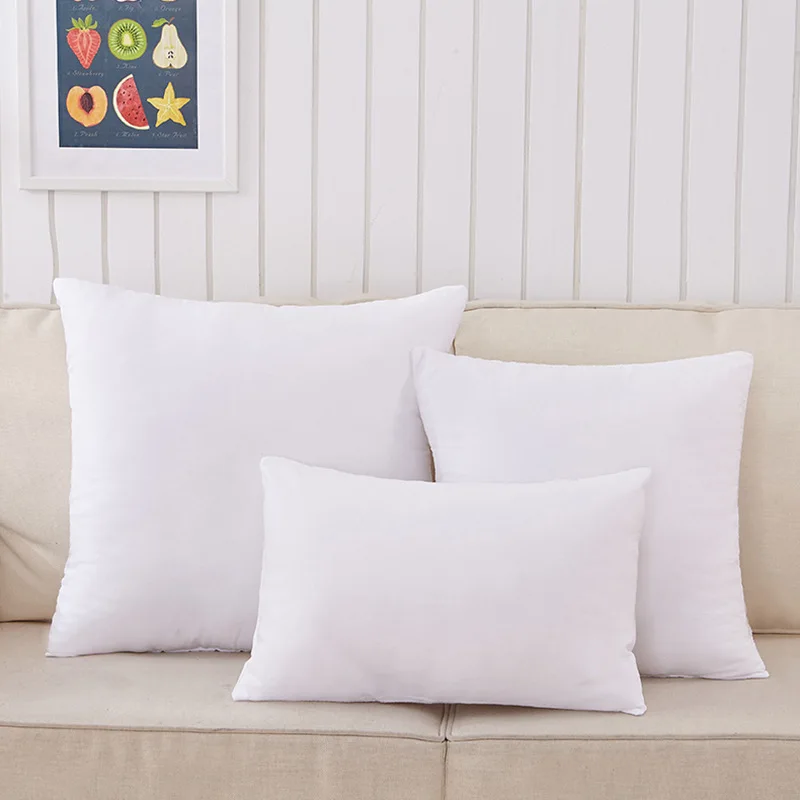Upholster a wall
Upholstered walls are trending – here's how to get on board
The most dramatic way to elevate your home is by changing your walls – but interior experts are urging us to delve into a world beyond conventional paints and wallpaper and experiment with the most luscious trend to date. Yes, we can create the ultimate statement of opulence and luxury through upholstered walls – the craze that drenches the room in nothing but pure, unrivalled style.
See: Interior design trends – top looks for the year ahead
Creating a look that's reminiscent of a boutique hotel and giving a nod towards modern maximalism, upholstered walls have never looked – or felt – quite so current. But this decorating technique has already kissed the walls of the most fashionable homes throughout the centuries. So, what does the process involve? And how can we bring this enduring trend into our homes?
Here, the experts reveal everything we need to know before going all-out indulgent across our walls.
(Image credit: Arte)
What are upholstered walls – and why are they trending?
(Image credit: Arte)
‘Upholstering walls is a highly complex and specialist process, dating back hundreds of years, where fabrics are stretched over battens attached to the wall, which as well as adding pattern and color, creates a wonderfully cozy, cocooning, textured feel,’ begins Arte’s Managing Director, Philippe Desart.
But why are upholstered walls trending now? According to Philippe, new technologies that have created alluring ‘textile wallcoverings’ are bringing the indulgence of upholstered walls into an increasing number of homes, as they are ‘far easier to install and create the same warm and welcoming feel.’
He continues: ‘From light silks and satin to heavier fabrics like boucle, corduroy, cashmere or velvety chenille and suede, there are a number of real textiles, as well as innovative and clever imitations to suit all styles and budgets in both traditional and contemporary spaces.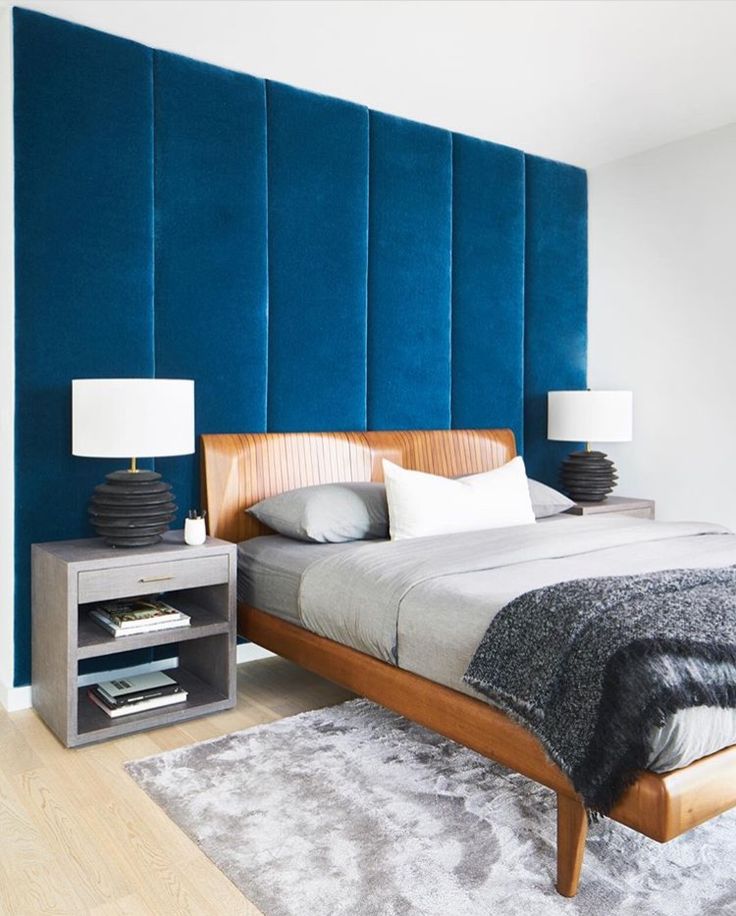 ’
’
How to bring upholstered walls into your home
(Image credit: Arte)
With so many textures, patterns, and emerging techniques, designing an upholstered wall that is suitable for our homes can be tricky. However, we’ve spoken to the people at the top of the interiors industry who shared how to make the process more seamless – and how to make these luxurious walls work for you.
1. Experiment with flat wall upholstery
(Image credit: Arte)
It is possible to indulge in the aesthetic of a wall upholstery without the overindulgent pin cushion effect – according to designer Miles Redd of Redd Kaihoi .
‘There is nothing like fabric and batting on a wall for an extra layer of luxury and comfort. I favor very tailored flat wall upholstery – with just the thinnest layer of batting, to avoid the pincushion effect. I love a rich-colored satin on walls as it gives more depth than paint, but also a fan of patterns,’ Miles shares ‘Walls can be expensive, so if that is not in the budget, I always love to upholster a banal door with leather and nailheads,’ he adds.
See: Wallpaper trends – the most stylish ways to dress your walls
2. Play with paper-backed fabric
(Image credit: Fermoie)
Perhaps one of the biggest obstacles in upholstered walls is the timely installation process. However, the Director of Fermoie , Jamie Shawcross, offers an alternative in the shape of paper-backed fabric.
‘Paper-backed fabric can be hung on a wall in the same way as standard wallpaper, but the effect is far from average. It adds a layer of luxury to a room, it’s tactile, and it’s warm and cozy. It is not a DIY job to attempt over a wet weekend, however.’
3. Indulge in wallcoverings with depth
(Image credit: Arte)
In all their glorious colors and patterns, upholstered walls exude maximalism – especially when selecting real textiles wall coverings with depth. Philippe recommends choosing luscious deep coverings that boast ‘striking contemporary patterns,’ such as the Monstera, Palma, or Panthera (above) from Arte’s Yala collection.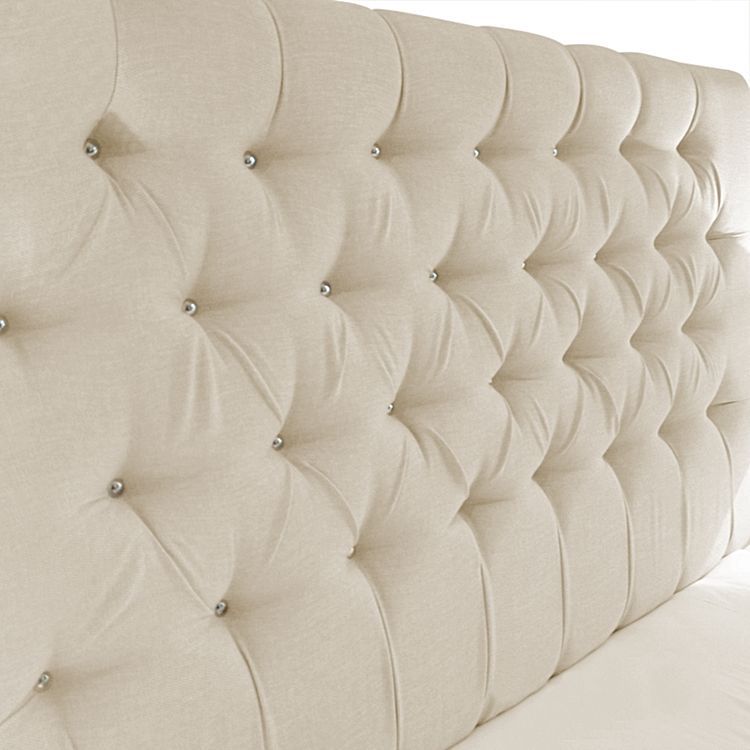
See: Wallpaper ideas – gorgeous decor for every room
4. Upgrade your walls to works of art
(Image credit: Arte)
The unparalleled aesthetic and the craftsmanship behind upholstered walls rivals any artwork while adding ‘warmth and texture, as well as an imposing presence that establishes and grounds a room, a corridor or a stairwell,’ shares Camilla Clarke, Creative Director at Albion Nord .
Camilla also suggests that patterned textiles bring ‘an old-world charm to the most contemporary of rooms, and the contrast between more contemporary pieces in close proximity can be really arresting.’
5. Create upholstered walls – with a twist
(Image credit: Fermoie)
See: Accent wall ideas – inspiring feature wall ideas and creative focal points
For the ultimate contemporary twist on this century-old trend – get creative – and design a scheme reminiscent of a boutique hotel by creating upholstered walls using curtains.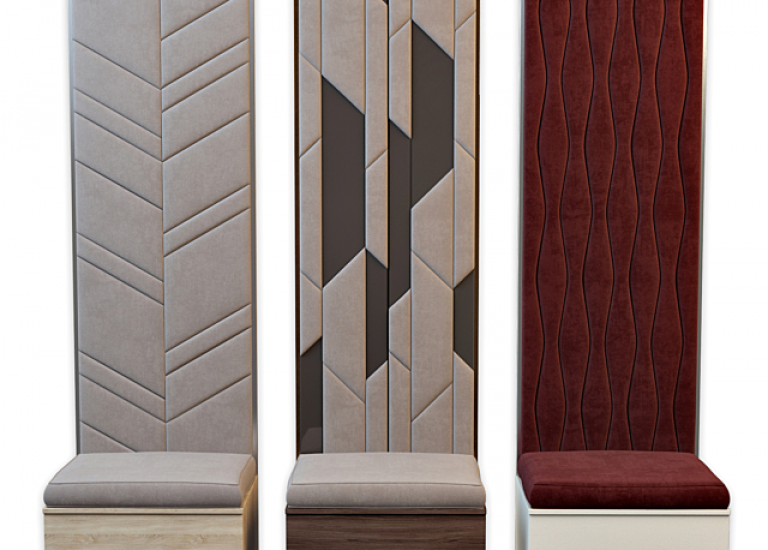 Choose curtains that run the course of the walls, and match your soft furnishings to bring the luxurious scheme together in style.
Choose curtains that run the course of the walls, and match your soft furnishings to bring the luxurious scheme together in style.
While we may be able to return to a hotel, we've never felt so inspired to bring its allure into homes. Maybe we'll just have to do both.
Wall upholstery 101 - How to install traditional fabric walls
When it comes to wall upholstery, there is only two options. You either ask a professional to perform the installation or decide to do it yourself. Both options could be overwhelming if a person does not have some basics. Finding a skilled wall upholsterer could be a challenge and getting a good method for a DIY fabric wall project is another.
I have read a few blog posts’ on DIY fabric wall project and watch some online videos on this subject. The good news is a person needs basic upholstery skills, patience, discipline and like working with fabric.
In some case, I saw people using glue to apply a textile directly on a wall. Well, this method is not called wall upholstery.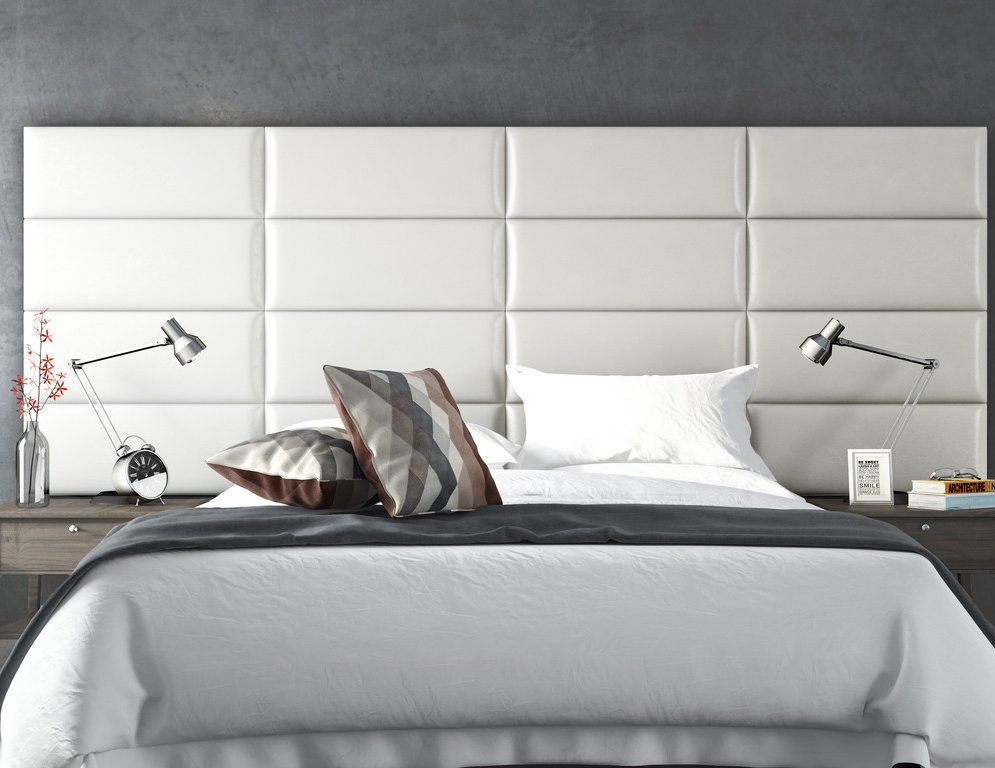 Nor stapling a pattern fabric on a separate panel or board and then hang it on the wall. I would name this wall Art.
Nor stapling a pattern fabric on a separate panel or board and then hang it on the wall. I would name this wall Art.
A third type of installation is fitting a fabric over a layer a Dacron and stapling around the perimeter of the room. Of course, additional braid is required for hiding the thousands of staples. Actually this option is wall upholstery as long as no glue is involved in the process.
Nevertheless something is missing with that idea. For instance, the lack of preparation is an important step like adding a small frame. A frame that is created by a slat, a strip fixed to the wall before the fabric is install on the surface. I will explain further later.
What type of fabric installation?
I have nothing against any of these approaches below. All 3 have a completely different look. So if you decide to go with one of them, you will need precision, patience and strength. And time of course! It may take several attempts and several days to complete your DIY fabric wall project but you can do it.
A basic installation would be to wrap the fabric on a frame. Because your fabric has some type of design, pattern and colors, it hangs like a canvas or a painting. With no upholstery skills a person can build a frame then stretch a fabric over it. The idea of placing them in a series is interesting.
Here is a thought. Instead of getting an upholstery fabric with a motif, get a plain canvas and paint on it. I am sure someone at home will be happy to help!
Now the second option is a little delicate because of the paste that goes on the wall. The same idea as wallpaper but the bonus is the fabric won’t tear. The trick is keeping air bubbles away. If you have manage wallpaper with motives then there are no reason for failure. Remember no to over stretch the textile.
Conclusion this is work is a job for a wallpaper installer or for yourself if you are up to it.
Before we take a closer look at the last method that requires basic skills, what if you wish to hire someone?
Hiring a skilled wall upholsterer
Given these points, some of you will decide to go to a professional.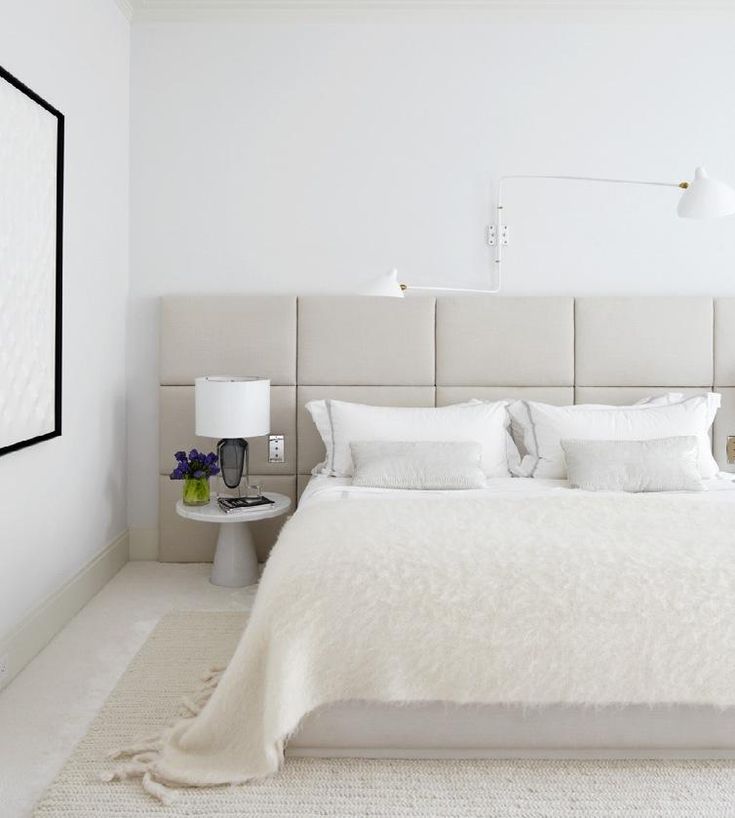 So, try getting as much information as possible. In order to guide through THE process, I have written an article on this topic. Laying out questions you should ask before hiring an installer. You can find it at How to choose a wall upholsterer?
So, try getting as much information as possible. In order to guide through THE process, I have written an article on this topic. Laying out questions you should ask before hiring an installer. You can find it at How to choose a wall upholsterer?
An upholster should offer options like with or without decorative trimmings. Also, Does your upholster know that there is another fitting method than stapling the fabric? We have research thoroughly for various products or good fitting system on the web for homes. Most tracks are for commercial use and do have their limitations for residential application. In fact, there is only one which stands out. It is called Clean Edge System. A revolutionary track for residential use as it works with all challenges found in homes.
Ask a professional if he can use that type of fabric system.
We have a portfolio full of pictures of wall upholstery. They will help you in many ways. Look at the installations and the type of rooms.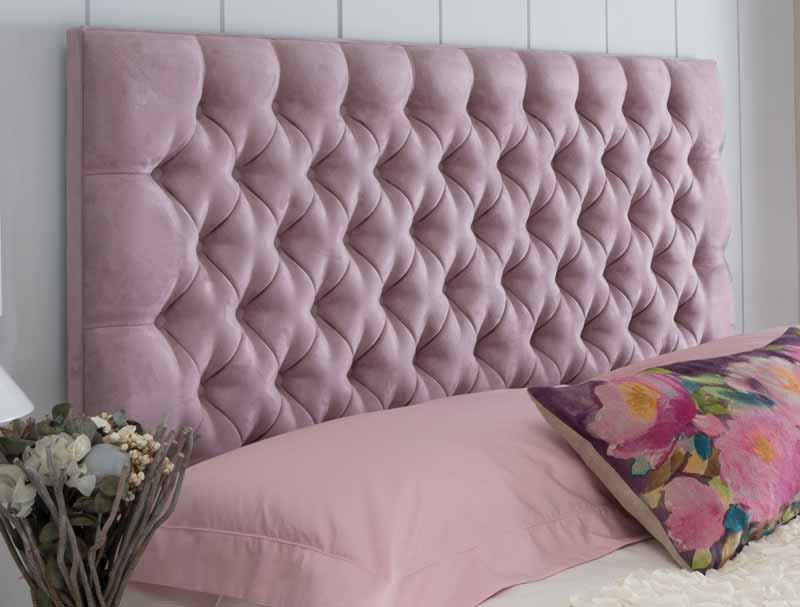
Now the last option for someone who wish the job himself.
Stretching upholstery fabric
The question is Can you stretch fabric on walls? Yes, you can. Do you need upholstery skills? It helps because streching fabric is not like working with wallpaper. However as I mention earlier, wall upholstery requires patience, precision and an amount of strength depending on the scale of the project. I am including a few links (words in blue) to help you.
Remember wall upholstery 101 includes for the materials a fabric, some types of padding, and a support to attach the fabric. Plus small fittings, brad nail and staples.
Most important a wall is said upholstered only because it has a layer of padding behind the fabric. Don’t forget!
First and foremost, a fabric should not be stapled directly to the wall but be fixed on some sort of support like a slat. For one thing, if the fabric needs removing away from the wall, you will be very upset with yourself for not having installed any slats.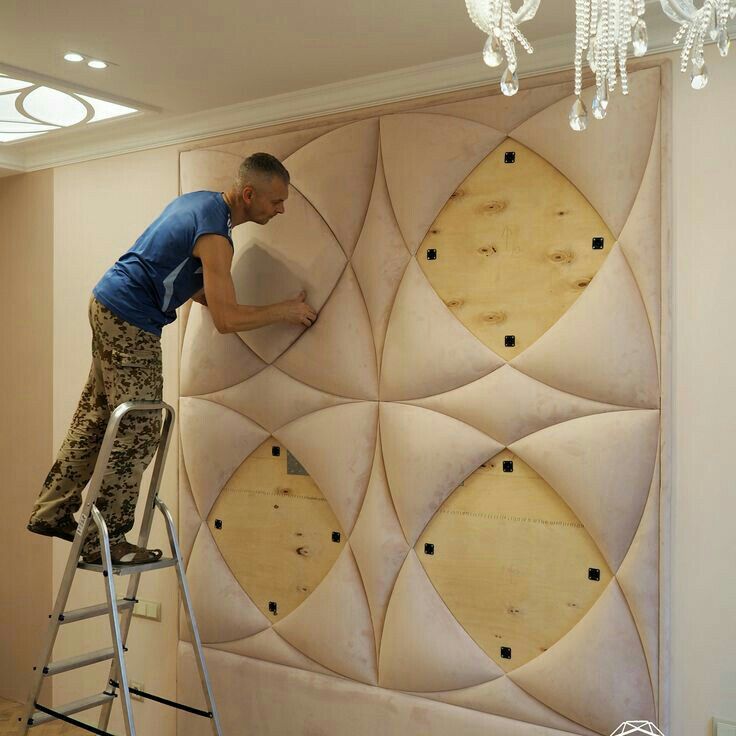
Wait a minute. Do you really want to pull out all the staples one by one? Think about the time spent doing this. And you will damage so much the sheetrock, plaster everywhere…What a mess!
So what is the solution?
You need to fix a frame where the fabric is stapled to it. It is a little more work but well invested as the walls will also look so much better. Most people take wooden strips which have a few inconveniences. What are they?
DIY fabric wall project with fabric trims
If you wish to go with wood slats then you will need to buy a sheet of wood; ¼ inch plywood. And make strips of 1 to 1 ½ inch wide.
This stage is another project that could be discouraging. Besides, this method requires a table saw. So, let say you decide to go through it which is fine. Then when time comes to install, you will find that your hands could be damaged or even bloody from splitters during the process. Remember the fabric needs to stay clean. Hello!
Finally during the fabric installation, you will have a high chance of pulling fabric threads from the wood.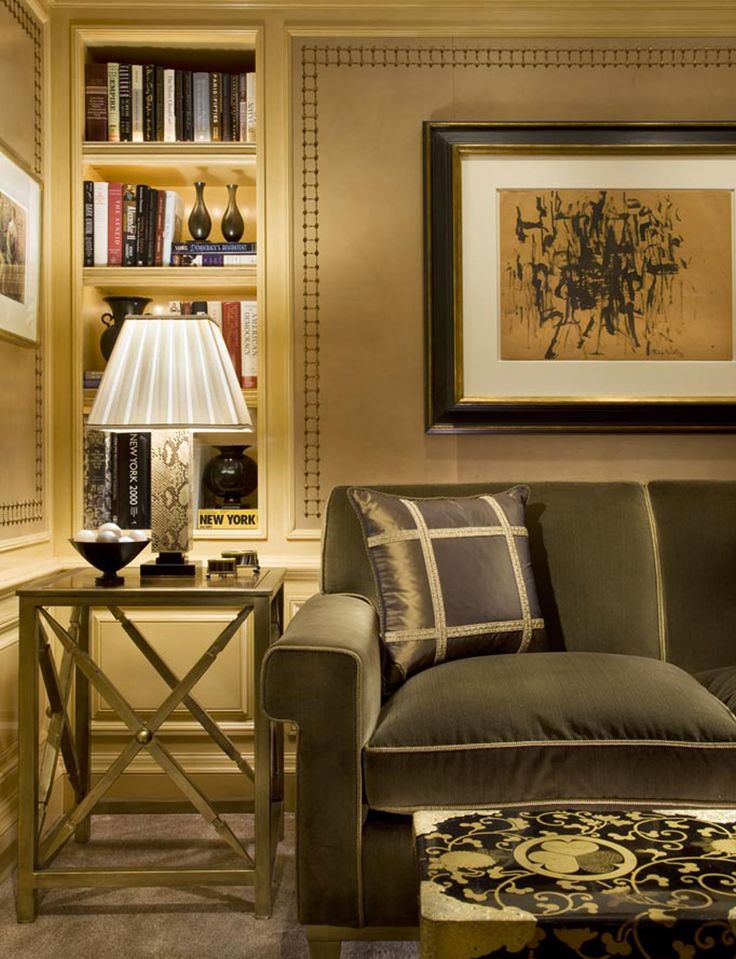 And more observation, wood brakes too.
And more observation, wood brakes too.
In all honesty try to keep this experience simple. Instead of working with wood, my advise would be to rule out plywood.
Simply replace wooded strips with another product called CWS or Contour Wall System.
It is a handy method making a faster job. The fabric is fixed on it, trimmed then a flat braid or welt is added for hiding staples.
A clean and quick DIY upholstery
The product comes in strips ready to use. Each length is 94 inch long by ¼” thick. Contour wall system or CWS is a white strip designed especially for wall upholstery. You will not get all problems mentioned above. Each box has 40 lengths, which makes 100 yards. Smaller quantity is available.
In a nutshell:
What you need to do is place and staple this product around the room using ¾ inch staples or brad nails. It is easy to cut CWS (Contour Wall System) with sharp track cutter.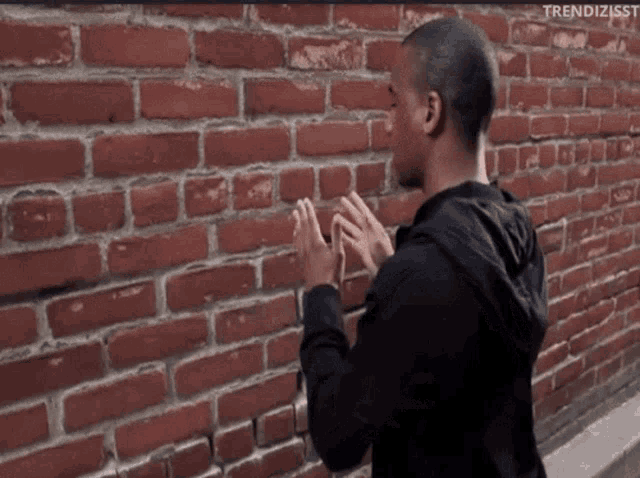 You will be able to make small pieces without problem, even cut at 45 degree angle. After installing the strip around the perimeter of the room, by doors and windows, add a layer of padding.
You will be able to make small pieces without problem, even cut at 45 degree angle. After installing the strip around the perimeter of the room, by doors and windows, add a layer of padding.
Cut the padding just before the strip so they are both at the same level. Proceed with the fabric installation by stapling the fabric on the slat. Trim the excess fabric, then add the desire decorative fabric trimmings.
In case you choose to add brass or nickel nails instead, it will just fine. Any size works.
Remove all furniture from the walls. If the room is empty it is even better. Measure each wall; width and height. Disregard the windows.
Remember that most fabrics are 54″ or 48″.
Let’s say that a wall is 130″ wide, you will need 3 widths of fabric for 54″ wide (3 x 54″ = 162″). For a 48″ fabric, count also 3 widths (3 x 48″ = 144″) And so one with the other 3 walls.
If your wall is 98″ tall, add 5 inch extra to each drop of fabric (103″). This means, you have 3 widths x 103″ = 339″ convert in yard after you have added the other walls. Go shopping for fabric and have fun. You may want to add an extra width as a security. You never know what could happen.
This means, you have 3 widths x 103″ = 339″ convert in yard after you have added the other walls. Go shopping for fabric and have fun. You may want to add an extra width as a security. You never know what could happen.
Your supplies.
- Get a ladder, scissor, a pencil, a tape measure.
- Get a compressor, a staple gun or brad nailer. Staples or brad nails ¾” long
- Buy some tracks Contour wall system, a track cutter
- Purchase some padding ¼ to ½” thick
- Find the right fabric
- Sewing machine to seam up the width of fabric.
Step one is the strip.
Take a length of Contour wall system (CWS) and a brad nailer, start by the ceiling at the top right or left corner.
Place a strip against the ceiling or crown molding and fix. Take another length until you reach the other corner.
Use the track cutter for cutting the strip to the correct length.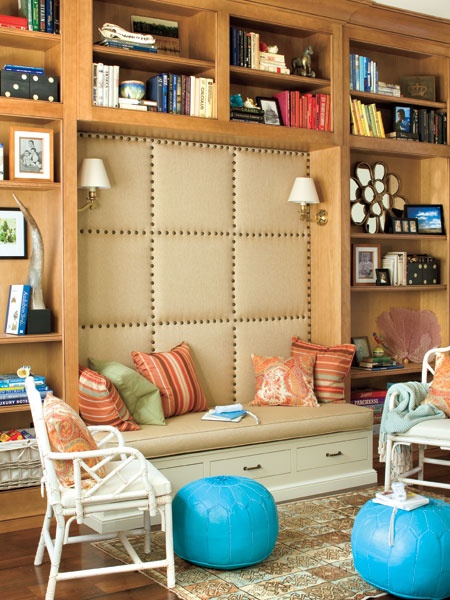
Step two.
Do the same at the base of your walls or chair rail.
Step three.
Do the vertical strips. At each step: measure, mark your slat, cut and attach the CWS with brad nails. Repeat all around the room. Don’t forget to put strips by the window and door. Fit them against the moldings.
Take a break from your job!
If you are doing a large project, you may need a break at this point.
Then, clean your space and get ready for the next step.
Step four.
Get your padding. Place it just below the track at the top and use your stapler. Trim if too long.
Step five is the fabric.
TOP. Place fabric over the wall with a little extra all around. (Leave more extra cloth at the bottom) Start at the top center with one staple. Hold and stretch very slightly from center to the right, staples on the CWS until you reach the corner. Repeat from the center left to the other corner.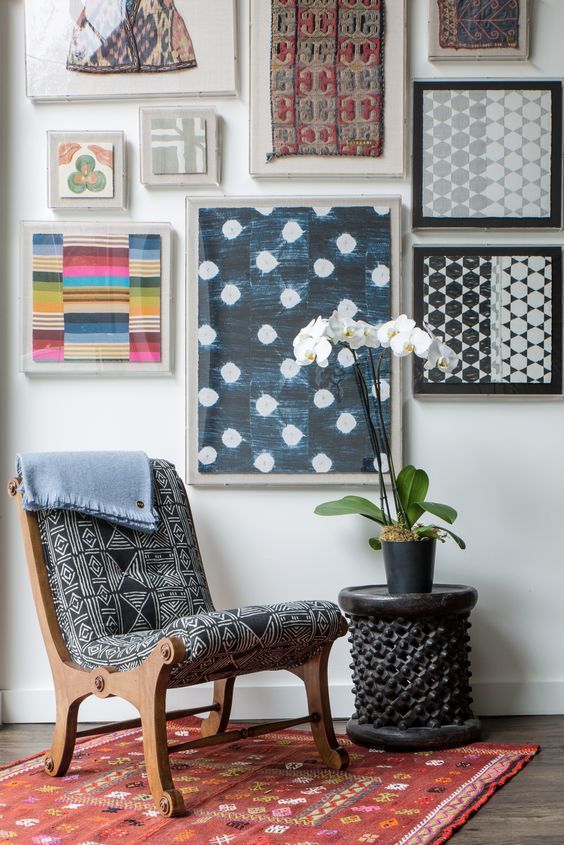
BOTTOM. Go to the bottom. Let the fabric hang naturally and stretch it vertically, staple in the center. Work to the right and to the left. Make sure keep straight.
SIDES. For the sides, pull slightly the cloth and put one staple at the center right and one the left side. Look back to see it is all leveled. Start stapling the sides. Trim the excess fabric all around.
Step six.
Finally, apply the decorative trimmings of your choice with glue. This operation will hide all staples Any size works. If a nail is not at the correct place, pull it out and reposition. Contour wall system does not split open, which is a great bonus.
I believe you have now all elements for installing fabric wall upholstery 101.
Conclusion on a DIY upholstery project
I have review 3 ways for having a fabric on a wall.
The most basic upholstery skill wrap a fabric on a panel.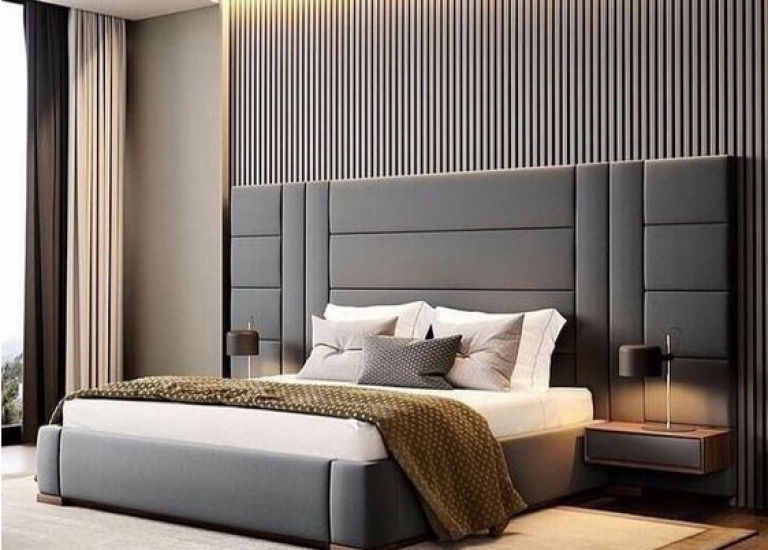 Stretch a fabric on a frame or a board. It is up to you to add padding or not.
Stretch a fabric on a frame or a board. It is up to you to add padding or not.
Next is a glue job. A fabric stays permanently glued to a wall and it is a flat solution like wallpaper. Try this on an accent wall with a pattern, it looks good when a fabric has a design.
Then, there is the wall upholstery option where you will use a ready made strip fitted around the room, a padding and a fabric.
But there is still another way, hiring a skilled wall upholsterer.
How to inexpensively sheathe walls in a wooden house inside
Interior decoration is an important part and the final stage of building a country house. Many do not think about this during the construction of the foundation and the installation of a log house, the installation of communication systems. But when the house is already under the roof, engineering networks are carried out, the question arises of how to finish the wooden house inside. Finishing “under zero” is far from suitable for everyone, and it also requires special treatment of walls with paints and varnishes.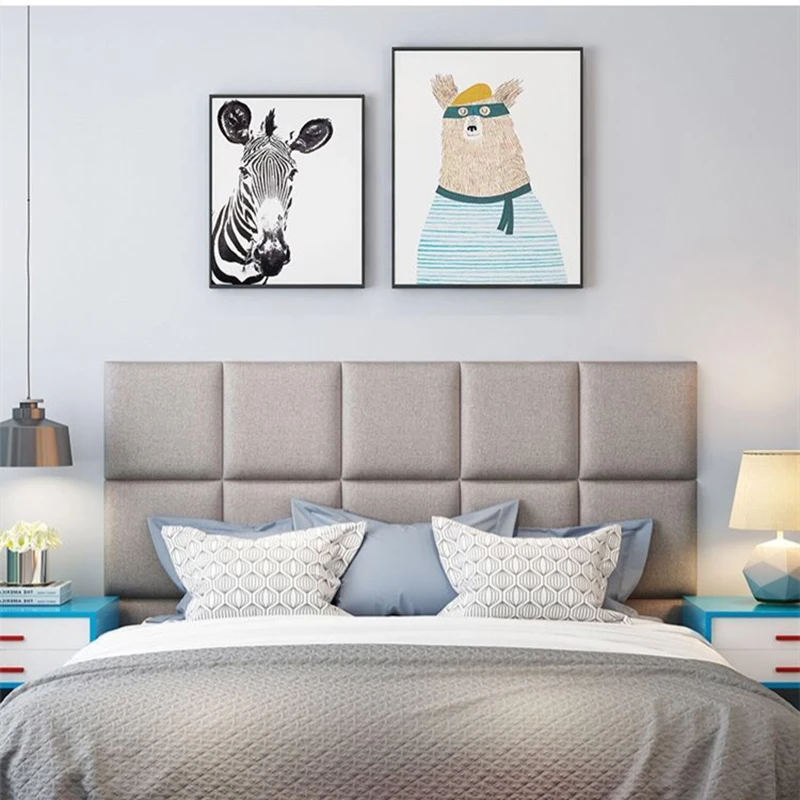 In addition, the house with such decoration looks empty and uncomfortable.
In addition, the house with such decoration looks empty and uncomfortable.
We want materials to be durable, reliable, but at the same time inexpensive. And the interior as a result turned out to be cozy, comfortable and attractive. In addition, when arranging a wooden house, it is important that the products are environmentally friendly, preserve the naturalness of the structure and maintain a comfortable microclimate inside the premises. Today the market offers a lot of finishing materials. In this article, we will look at how to sheathe the walls in a wooden house inside inexpensively and beautifully.
Features of the choice of finishing materials
- Pay attention to the marking. The designation E1 says that building materials are intended for residential premises, E2 - for the hallway, kitchen, toilet, utility rooms, E3 - for public and industrial premises;
- If you use wood finishing materials, you can choose a class and quality worse than required.
 After that, modify the products and bring them into an aesthetic appearance on their own. For example, sand and sand, varnish and / or paint, impregnate with protective compounds, trim if necessary. Thus, you will spend less money than when buying high-class materials;
After that, modify the products and bring them into an aesthetic appearance on their own. For example, sand and sand, varnish and / or paint, impregnate with protective compounds, trim if necessary. Thus, you will spend less money than when buying high-class materials; - For rooms with high humidity (bathroom and toilet, balcony, basement, cellar, etc.), choose moisture-resistant materials. If you use wooden products, be sure to treat the products with protective agents against the negative effects of moisture, rot and mold;
- Choose eco-friendly natural materials for your wooden house. In such a structure, plastic double-glazed windows or panels will look inappropriate. They will violate the environmental friendliness of the house, bring disharmony and only spoil the interior;
- Choose durable, reliable materials and do not forget about the quality of the finishing work. Remember that a wooden frame gradually shrinks, which can lead to cracks. Think over this moment in advance so as not to make repairs every 3-5 years and not to change the damaged skin.
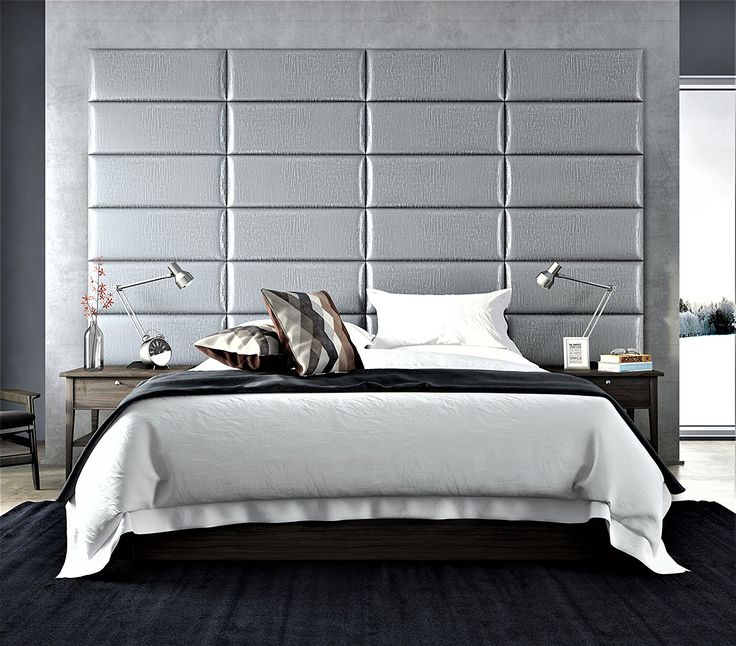
Do not use
Before deciding how to sheathe a wooden house from the inside, we will analyze which materials will not work. When finishing, you need to abandon plastic panels and linoleum. Such products are characterized by availability and cost-effectiveness, high resistance to moisture and a wide choice of colors, easy installation. However, the advantages of PVC cover the artificiality and lack of environmental friendliness. They emit a sharp toxic odor when heated, collect dust, let air and steam through.
Linoleum is a popular flooring available, but not recommended for wood floors. It is not environmentally friendly and requires careful preparation of the base, since the material can only be laid on a flat surface. In addition, in a wooden house, it does not look very appropriate. In rare cases, linoleum can be laid in utility rooms or the basement. However, even there it is better to lay the usual wooden boards.
OSB, fiberboard or chipboard panels are also not suitable, since harmful industrial glue is used in the manufacture of materials.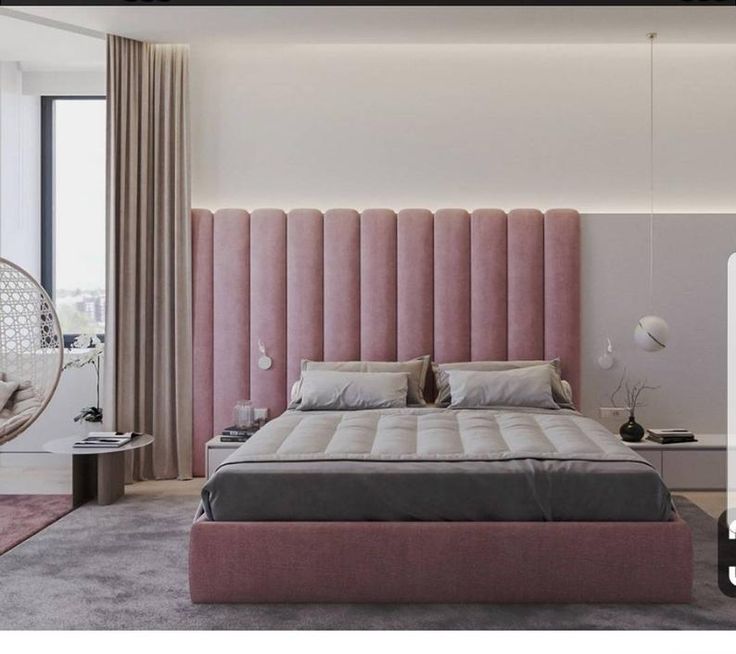 In addition, these are the most non-environmentally friendly products that are made from wood waste. They do not have a very aesthetic appearance, so such materials are often used for rough finishes. In particular, it is not recommended to use laminate for flooring. It is not resistant to moisture, slippery and cold.
In addition, these are the most non-environmentally friendly products that are made from wood waste. They do not have a very aesthetic appearance, so such materials are often used for rough finishes. In particular, it is not recommended to use laminate for flooring. It is not resistant to moisture, slippery and cold.
Wall panels MDF is a foreign analogue of fiberboard, which is more environmentally friendly, since toxic resins and enzymes are not used when gluing individual elements. Such panels are easy to mount directly on the walls. They come in a variety of designs and colors. However, they are not at all resistant to high humidity and wear.
The panels listed above are not strong enough and not resistant to moisture. In addition, they are fire hazardous and are characterized by a not very attractive appearance. When sheathed with such panels, the room looks more like an office or office than a living room.
But then what to choose and what is the best way to sheathe the walls inside a wooden house? A suitable option would be natural wood materials with a protective impregnation.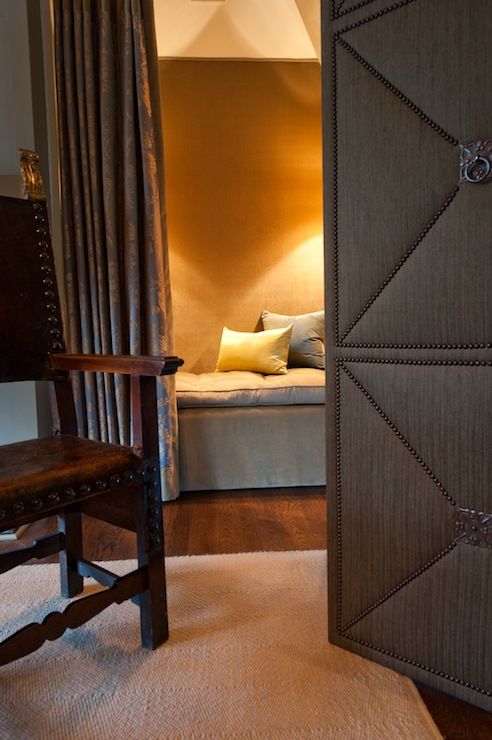 It can be planed and polished boards, lining, veneer and other similar products. Let's take a closer look at what materials it is better to finish a country house from a bar or log.
It can be planed and polished boards, lining, veneer and other similar products. Let's take a closer look at what materials it is better to finish a country house from a bar or log.
Wooden materials for finishing
We note right away that the most suitable option would be a wooden lining. This is an affordable material with an attractive appearance, environmentally friendly and natural, easy to install and maintain. Thin slats are used for both ceilings and walls. If you want to create the effect of a log house, choose a block house that imitates a log. One surface of the block house is semi-circular and the other is flat.
Lining - the best combination of price, quality, appearance and environmental friendliness. But if you are willing to pay, go for high-end natural wood materials. These are cork panels and solid wood panels.
Cork - modern materials that are environmentally friendly, high quality, strength and durability, luxurious appearance.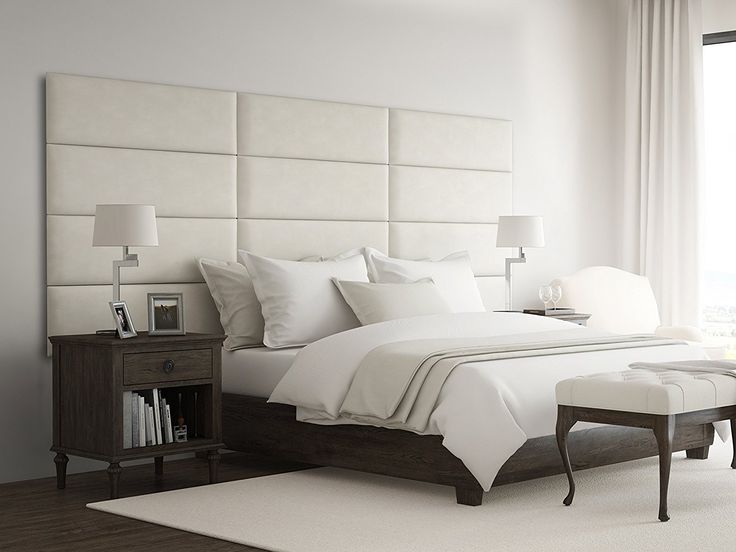 They perfectly tolerate high humidity and are suitable for every type of room. The only, but significant disadvantage is the very high cost.
They perfectly tolerate high humidity and are suitable for every type of room. The only, but significant disadvantage is the very high cost.
Solid board or solid wood panels is also an expensive option, but at the same time it is very reliable and of high quality, as it is completely made of elite natural wood. This coating looks expensive, luxurious and prestigious. A solid array, even under heavy loads and high humidity, will easily serve without repair for 30-50 years.
Parquet board - a suitable option for finishing the floor in a wooden house. This is an affordable material that characterizes easy and quick installation. And decorative painting or varnishing will make the appearance of the parquet elegant and aesthetic.
Veneer panels are an excellent cost-effective material used for wall cladding. It is a thin cut of solid wood, which retains the wood pattern, color, texture and structure. For finishing, choose only natural veneer, as it is more durable and reliable.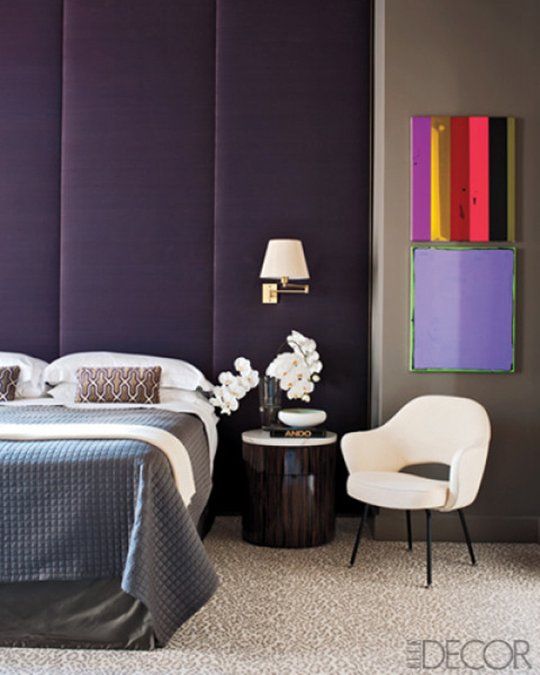
The veneer has an attractive appearance, is characterized by ease of installation and practicality, good sound and heat insulation, low price. But at the same time, the basis of the material is fiberboard or chipboard, so the material is not 100% environmentally friendly and cannot be used in rooms with high humidity.
Other types of budget materials
Stucco is a traditional option for finishing the ceiling, which is sometimes used for walls. This is an inexpensive and affordable material, easy to use and install. It will give a smooth white surface, but white is not always appropriate in a wooden house. Such material is used if it suits the style of decorating the rooms. For example, it can be classic or French Provence.
Drywall is an affordable and fast finishing option. These are sheets of cellulose and pressed gypsum, which are easy to install and fix. Modern manufacturers produce material with a special treatment that increases resistance to moisture and fire. Drywall allows you to create complex design projects, install two-level ceilings. However, this is a fragile and not very aesthetic material, so it needs to be improved after installation (painting or wallpapering).
Drywall allows you to create complex design projects, install two-level ceilings. However, this is a fragile and not very aesthetic material, so it needs to be improved after installation (painting or wallpapering).
Ceramic or tile suitable for bathrooms, bathrooms or kitchens. If you are laying tiles on the bathroom floor, choose products with a rough surface to prevent slipping and ensure safety. Such material is characterized by strength, durability and increased resistance to moisture and dampness. Today you can find a lot of design options for tiles, including those designed to look like wood.
But when laying tiles on wooden walls, keep in mind that a reinforced base must be made under the material, otherwise the product will not last long! It is not necessary to completely lay out the bathroom with tiles. You can sheathe only certain sections or use a mosaic. By the way, the combination of mosaic and wooden materials looks very impressive and harmonious.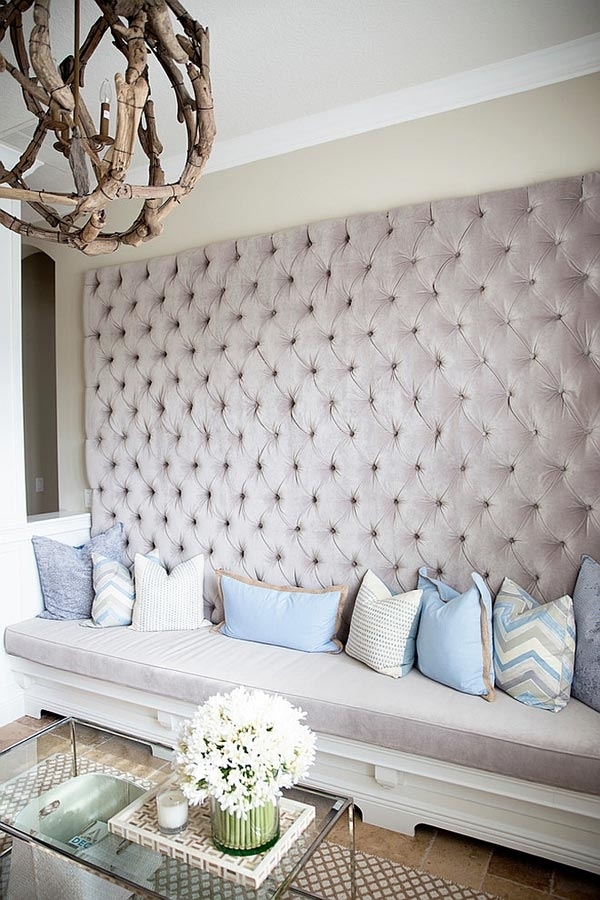
Lining - the best option
Wooden lining is characterized by high strength, reliability, aesthetics and 100% environmental friendliness. Such products are used for cladding walls and ceilings in a wooden cottage, a country house, a bathhouse and a sauna, a balcony and a loggia, in an apartment. This is a versatile material that is easy to install, so even a non-professional can handle the installation.
Narrow thin laths closely adjoin each other, form good sound and heat insulation, level the surface of walls and ceilings. Wooden materials look aesthetically pleasing and elegant. If you want to save money, buy grade B. After installation, defects can be hidden by varnishing or painting. Class A is more expensive and elite, it does not need to be finalized, and grade C is only suitable for rough work or finishing utility rooms.
Do not forget about the protective treatment of lining. You can buy ready-made materials or process the wood yourself. The second option will be cheaper.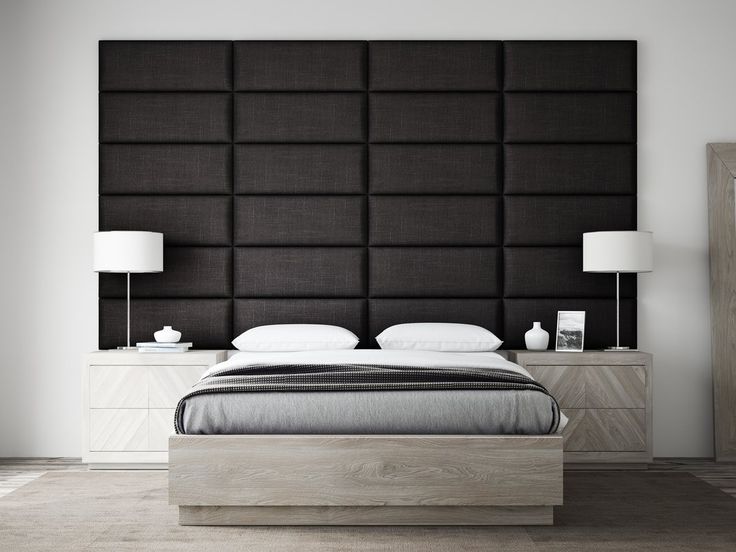 The lining is installed on a crate made of bars. It is convenient to install hydro- and heat-insulating materials in the crate. Laths can be laid vertically, horizontally or diagonally.
The lining is installed on a crate made of bars. It is convenient to install hydro- and heat-insulating materials in the crate. Laths can be laid vertically, horizontally or diagonally.
Today you will find a wide range of lining, differing by type of wood, width and length, profile and class. The best combination of quality and price in pine. This type of wood is suitable for a house, cottage or gazebo. For a bath, choose linden or alder, as they tolerate moisture and high temperatures well, and do not heat up. After installation, you can paint the material in any color, achieve the desired shade or shine.
Is it possible to use drywall to finish a wooden house
Drywall is the most popular finishing material that is used both in an apartment and in a private house. These are flexible sheets with a refractory surface and increased moisture resistance. They create a flat surface and hide the flaws of the walls or ceiling, they are easy to install.
Drywall hides pipes, wires and other utilities. But the main advantage of this material is its availability and low cost. In addition, today on the market you can find plates of different sizes, shapes and colors, which allows you to create any design of the room.
But the main advantage of this material is its availability and low cost. In addition, today on the market you can find plates of different sizes, shapes and colors, which allows you to create any design of the room.
But plasterboard finishes often look unfinished and require a final coat of paint or wallpaper. In addition, it is a rather fragile and fragile material that may not be able to cope with serious loads. Therefore, drywall is best used to create partitions or shelving, but not for finishing a wooden house.
If you decide to use drywall, choose only quality products from a reliable manufacturer. Often, harmful toxic substances are added to the material, which is harmful to human health and violates the environmental friendliness of a wooden house. High-quality real drywall is safe, as it is made from natural natural gypsum.
In "MariSrub" you can order the construction of a house from a log or timber on a turnkey basis! The company's masters will qualitatively and reliably perform all finishing work, including the installation and connection of engineering networks, wall, ceiling and floor cladding, installation of windows and doors.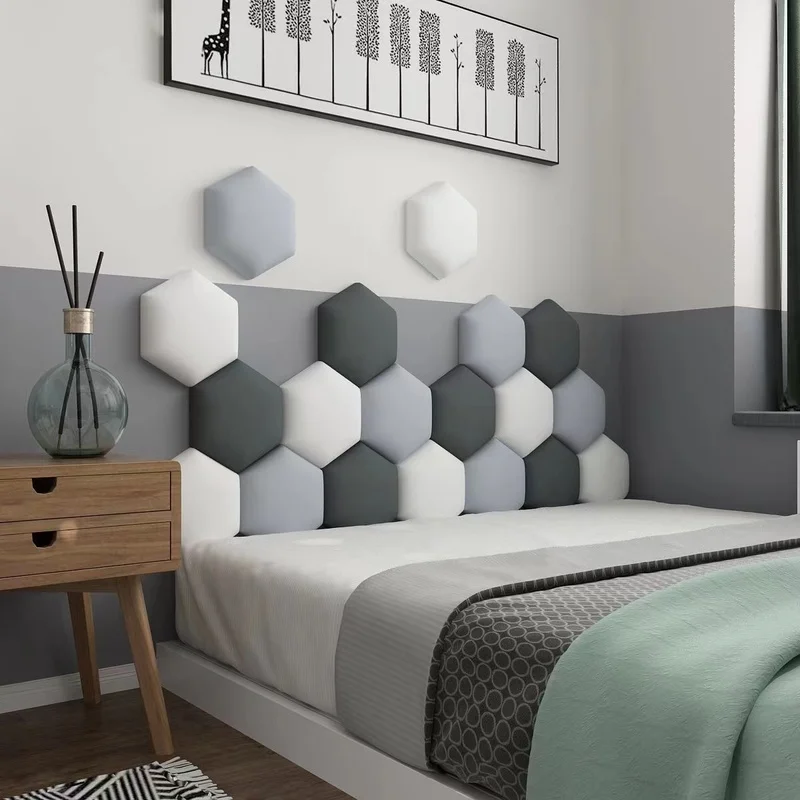 Order complex turnkey construction and you won't have to worry about anything!
Order complex turnkey construction and you won't have to worry about anything!
How to sheathe the walls in the house inside inexpensively and quickly
To answer the question "how to sheathe the walls in the house inside inexpensively and quickly", you should figure out if preparatory work is required before sheathing. If the walls have defects, they should be leveled to avoid a lot of problems in the future.
Contents of the article
The most popular materials
Among the huge number of materials used for wall cladding, especially popular ones can be distinguished, among them:
- drywall;
- panels of natural wood, known as battens;
- block house;
- PVC panels;
- MDF panels;
- moisture resistant plywood.
Each of these materials has its own characteristics, so you should consider them in more detail.
How to sheathe the walls in the house inside inexpensively
The most popular at the moment are six inexpensive materials. Each of them has its own advantages and disadvantages.
Gypsum board
plasterboard cladding inside the houseThis material is very popular because it allows you to quickly level the walls. Its equally important advantage can be called a very simple installation, which even a person who does not have much experience in this field can handle. A variety of communications are often placed under drywall so that they do not spoil the design of the room. If the walls are even, drywall can be attached directly to them with glue, otherwise a special profile is used.
Clapboard
wall cladding inside the house with clapboard This option is perfect for everyone who appreciates natural materials. The lining has a very aesthetic appearance and a long service life. Softwood panels are the most common, as they are more affordable, while more expensive oak, larch and ash options are less common.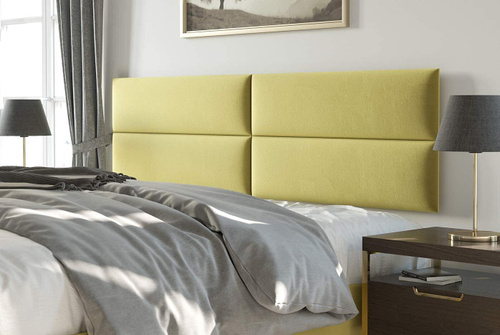 The installation of this material is carried out in almost the same way as in the case of drywall, however, not a metal, but a wooden profile is used.
The installation of this material is carried out in almost the same way as in the case of drywall, however, not a metal, but a wooden profile is used.
Clapboard can hardly be called a budget solution for wall cladding, however, it is very widespread due to its durability, environmental friendliness and aesthetic appearance.
Block house
sheathing of walls inside the house with a block houseAnother kind of wood sheathing, which is an imitation of round logs. It is widely used for finishing both internal and external walls, however, in the first case, a narrower version is used. A solid advantage of the material can be called simple installation - it has a groove and a spike that fit together, so almost anyone can handle the installation. Like other finishing materials made from natural wood, the block house should be treated with a special compound before use to protect it from moisture. PVC panels.
Quite a popular option among those who are looking for how to sheathe the walls in the house inside inexpensively.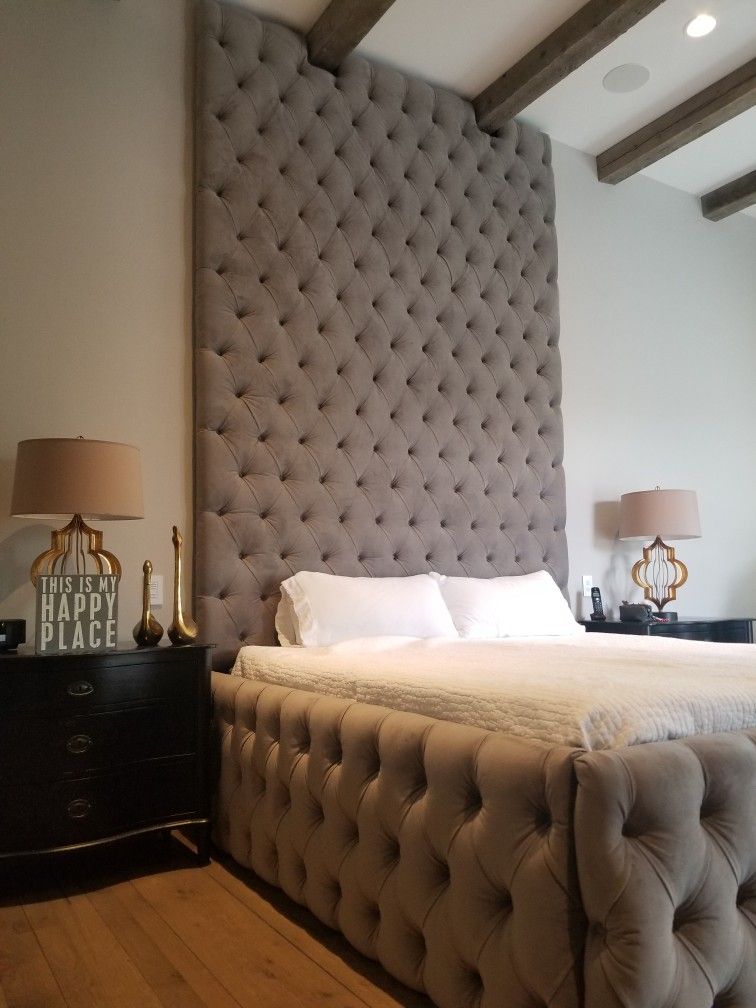 Its advantages include an affordable price and an impressive range of colors, allowing you to choose the best option for almost any interior. Unlike analogues made of natural wood, they do not require additional processing before installation. In addition, plastic lining is more durable than its wooden counterpart and is easier to maintain.
Its advantages include an affordable price and an impressive range of colors, allowing you to choose the best option for almost any interior. Unlike analogues made of natural wood, they do not require additional processing before installation. In addition, plastic lining is more durable than its wooden counterpart and is easier to maintain.
This material also has disadvantages, the most important of which is that it cannot be called an environmentally friendly material; when burned, it releases various harmful impurities. For this reason, PVC panels are best used in non-residential premises.
MDF panels
MDF panels for indoor wall claddingSignificantly more environmentally friendly choice than plastic panels as they are made from natural ingredients. They can be used for wall decoration not only in the hallway or in the kitchen, but even in the children's room. This material does not require special care, is easy to install and relatively low cost.
An equally important advantage of MDF panels is the ability to choose not only the desired color, but also the texture due to the wide range available on the market.